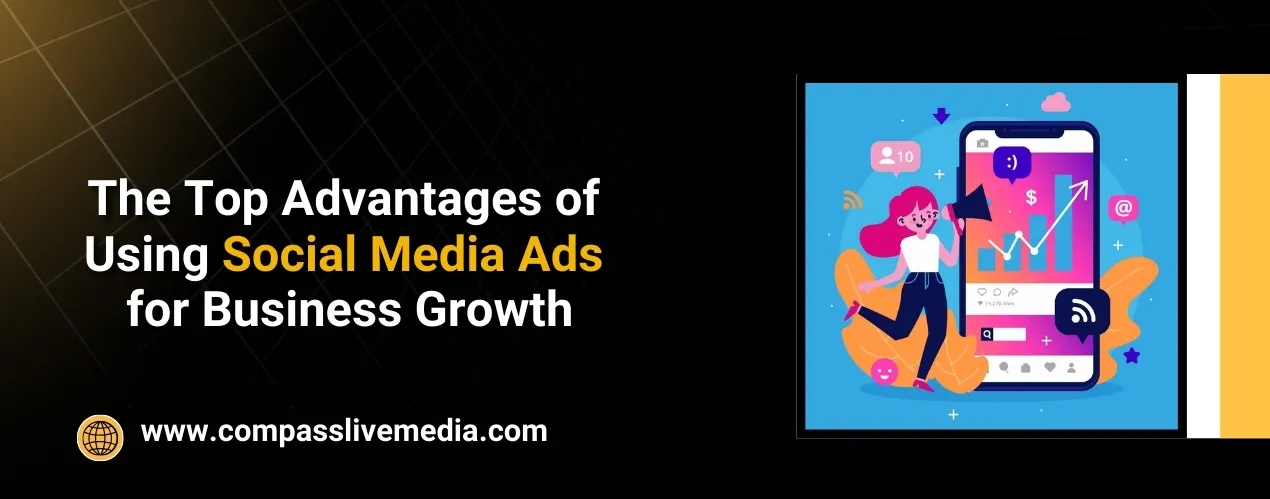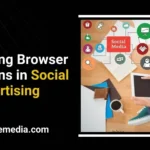Introduction
Social media advertising is not just a trend in 2024. It will be an important mechanism that will fuel business. With billions of active users on different social platforms. There is a great chance for businesses to engage their target audiences like never before. The advertising on social media benefits platforms is numerous. They include improved brand recognition and better conversion rates, and the list is endless. With the help of partnering with a professional social media advertising agency or using the services of social media advertising. Businesses can develop meaningful campaigns that will interest the audience and bring natural growth and a run for a beneficial position in the market.
What is social media advertising?
Social media advertising means placing paid promotions on social platforms, including Facebook, Instagram, LinkedIn, Twitter, and all other social platforms. As opposed to the organic material that is shared on a periodic basis. The social media ads are crafted to appear in the feed or timeline of audiences who fit the business’s target customer profile. Therefore, such ads can be images, videos, or posts and are typically created with view or click-through rates or conversion in mind. Thus, performance marketing offers an opportunity for business people to place. Their message in an appropriate place so that it can get to the right people at a beneficial time, as derived from social media ads.
Different Types of Social Media Ads in 2024
- Carousel Ads: interactive ads that are, for instance, several images or videos that a user can activate by swiping the screen.
- Story Ads: interstitial ads that pop up as full screen during other users’ uploaded videos or pictures.
- Video ad: a set of advertisements or a part of a movie created with the intention of grabbing the audience’s attention and passing. On a message in the shortest time possible.
- Influencer Partnerships: Use of celebrities on the social media platform in the promotion of their products.
- Sponsored Posts: Advertising that is posted in the same way as any ordinary post in users’ news feeds.
- Dynamic Ads: ads that are target specific and vary with the audience’s response to advertisements.
- Lead Generation Ads: These are advertisements that are created with the intention of directly scooping information from the user of the platform.
7 Ways to Advertise on Social Media for Business
- Targeted Facebook Ads: Use the targeting that Facebook provides to find out the best demographic you should market your content to.
- Instagram Stories: Use Instagram Stories as the main format of captivating, fullscreen commercials.
- LinkedIn Sponsored Content: Advertise business-related content to the working profession on the largest social media platform in the world, that is, LinkedIn.
- Twitter Promoted Tweets: They help increase the visibility of your tweets so that more people can see them.
- YouTube Video Ads: Design capable ads that allow a video to be advertised before or during the YouTube video.
- Pinterest Promoted Pins: Promote your products to the users looking for ideas on the pinforming service.
- TikTok Ads: Engage the younger audience about the product through innovative. Relatively short, video advertisements about the TikTok platform.
Social media advertising and marketing for small businesses
For small businesses, social media advertising can be an affordable and effective tool for making their advertisements widely known to the general public, thus potentially reaching the intended market. By doing so, social media advertising services help small businesses set up campaigns for advertising within their limited budgets with high returns on investment. While other forms of advertising may be very expensive for small businesses, social media opens the door for small businesses to be on the same playing field as large corporations and can help reach a specialized audience without the monetary expense. Thus, local targeting must be coupled with the effective usage of user-generated content. As an appeal to consumers and as a way to build trust in small businesses.
Why Businesses Should Use Social Media for Growth?
Businesses should host social media for growth because social media is perhaps the only other platform on which a business owner can comfortably be assured of such a large clientele base. Through engagement on social media platforms, organizations are in a position to develop brand equity. Share value with customers and transform them into purchasing customers at a very small cost compared to conventional advertising. It also gives insights into the behavior of consumers on social media platforms and can help business organizations mold their strategies based on actual evidence. In addition, engagements offered by social media are also more real-time than in most other media. Thus creating an opportunity for brand and customer loyalty. It is now imperative for social media to be integrated. As a part of the marketing mix in order to achieve steady growth in today’s world.
Advantages and Disadvantages of Social Media Ads
Advantages:
- Specific targeting: target particular populations and subject categories.
- Cost-effective: proportional resource allocations are easily traceable by ascertaining their impact.
- Real-Time Analytics: Availability of data for the purposes of enhancing on-campaign.
- Enhanced Engagement: They engage the users in some form of participation.
- Increased Brand Awareness: Increase the awareness level of the potential users or buyers.
- Scalable Campaigns: Able to quickly adjust a campaign’s size and scale to meet business objectives.
Disadvantages:
- Ad Stress: Consumers’ awareness can be oversaturated with advertisements. Hence, ad frequency causes advertising effects to wear out.
- Competition: They can place pressure on ad space. Which normally indicates that the costs of advertising are highly likely to be on the high side.
- Platform dependency: concentration on social media websites as the primary source of traffic and sales.
- Privacy Concerns: Here are some of the issues that can be discussed regarding this type of collection: privacy.
- Ad Blocking: Some users use ad blockers, which make it possible for them to reduce the visibility of ads.
- Algorithm Changes: In any case, it could be observed that algorithm changes can influence the performance of ads.
Conclusion
Business owners, thus, find social advertising to be the most reliable and flexible way of growing their enterprise in 2024. It also highlights how, through advertising opportunities through social media. Such firms can reach out to potential customers, increase brand awareness, and also get value out of social media initiatives. Thus, despite a number of problems related to social media advertising. Its benefits are clear when this type of promotion is subjected to proper planning and meticulous analysis.
For any business, whether using the services of a social media advertising agency or having internal specialists dedicated to social media marketing. The companies that invest in this segment are more prepared for the future that seems to be dominated by connected digital devices. The use of social media advertising is therefore important for any company that is interested in ensuring that they gain a competitive advantage. Hence keep themselves in the future.
FAQs
1. How do investors influence stock prices?
Businesses measure the worth of stocks based on the present worth of future earnings with regard to inflation and interest rates. Increased interest rates decrease the value of cash flow in a company. Hence pulling down its stock value.
2. What is a swing trading strategy?
Swing trading is the buying and selling of stocks in a matter of days with the belief that one can gain profits within. These short periods without regard to long-term investment.
3. What strategy do most traders use?
Swing trading is the trading in between day trading and investing where the trader seeks to capitalize on a particular stock’s price changes. Generally over a few days to weeks.




